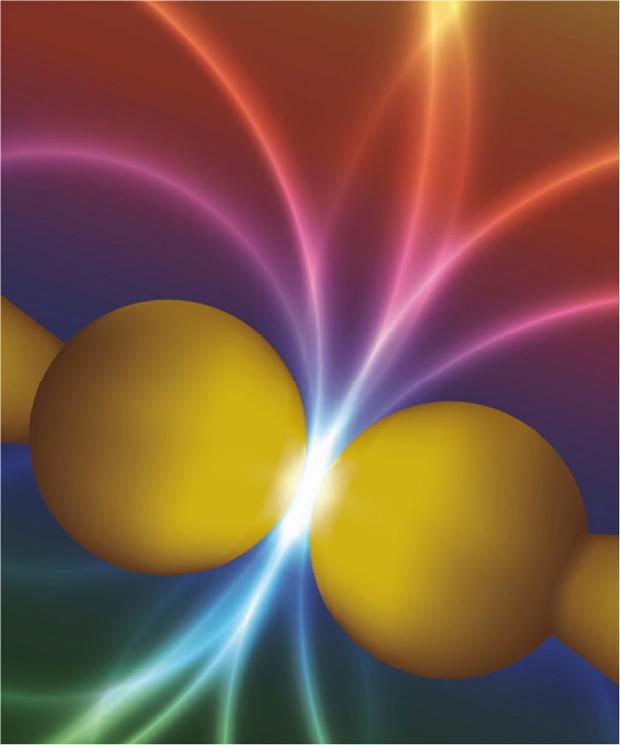They have literally 'seen' a quantum kiss between nanoparticles.
The gap generated between two opposing nanospheres of gold can change its color when the distance between them is less than one 1 millionth of a millimeter (nanometer), according to recent research which confirmed that electrons accumulated on the gold surfaces around the illuminated gap between the spheres can “jump” from one to the other, thanks to the tunnel effect and reducing the accumulated charge on the surface of each of these spheres and changing the color of the gap from red to blue (blueshifting).
This enables literally “seeing” quantum mechanics in action and shows how light interacts with matter at sub-nanometer sizes. The change in color of the gap is the chromatic fingerprint that identifies the initiation of the quantum regime - an effect that had been predicted by the theoretical team.
When two metallic spheres having a sufficiently small separation between them are illuminated with white light, this gap acquires color thanks to the interaction of the electrons on the surface of the spheres with light. The beam of light ‘pushes’ the electrons and makes them oscillate, which gives a red color to the gap. As the spheres get closer, the electron charge increases and this red color intensifies. When the distance between both is reduced to under 0.35 nanometers, this accumulation of charge can be seen to drop because electrons can jump across the gap by quantum tunneling, without the spheres coming into contact with each other.
Just as the hypothesis developed by the research teams predicted, it is possible to identify this quantum electronic leap, given that, as the accumulated charge drops, the red color of the gap changes to blue.

Artistic representation of the change in color when a quantum tunnel effect is produced in a subnanometric gap. Credit:Cambridge University.
Professor Jeremy Baumberg of Cambridge compares this reduction in charge with the tension released from a kiss; "we think of this like the tension building up between a romantic couple. As their faces get closer the tension mounts, and only a kiss discharges this energy". In this case, the gold nanospheres approaching each other generate a virtual kiss, they never actually touch, releasing the charge on their surfaces and changing the color of the gap between them. As Baumberg says, “it is practically like kissing, without the lips actually touching.
“Aligning two gold nano-particles is like closing your eyes and trying to hold two needles with the fingers of either hand so that the points of each needle touch. Achieving this has meant years of hard work.”
Dr. Javier Aizpurua, lead researcher at Donostia International Physics Center (DIPC) in Donostia-San Sebastián, explains that, in order to predict the color changes now confirmed with this experiment, “the fusion of the quantum view with the classical view of the world” was necessary. “Modeling of so many electrons oscillating within the gold particles in response to a beam of light could not be described with existing theories”, he said.
This new result establishes a fundamental quantum limit for the minimum dimensions within which we light can be trapped. Moreover, this reinterpretation of the interaction between light and matter at the sub-nanometric scale could provide new ways of describing and measuring the atomic-scale world and open doors to new strategies for engineering even smaller optoelectric technological devices and access new limits of resolution in photochemistry.
Citation: Kevin J. Savage, Matthew M. Hawkeye, Rubén Esteban, Andrei G. Borisov, Javier Aizpurua, and Jeremy J. Baumberg. Revealing the Quantum Regime in Tunneling Plasmonics.
Nature. DOI 10.1038/nature11653




Comments